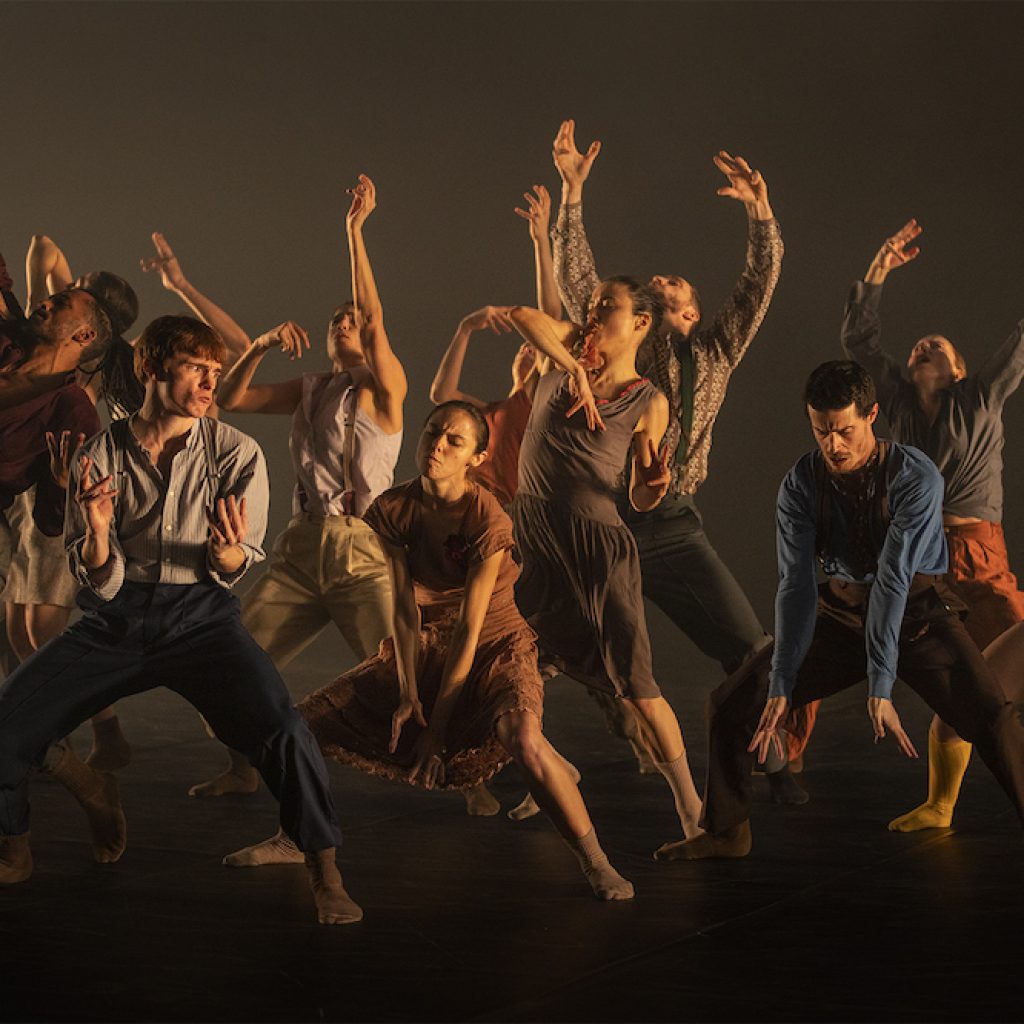The hit French film, Rise, by Cédric Klapisch, makes its U.S. debut this month. It tells the story of a ballet dancer on the precipice of stardom who suffers a devastating injury, while also learning that her boyfriend is cheating on her. Her path of healing puts her in the contemporary dance world, as she discovers new things about herself, dance and her heart. The film brims with beautiful dancing, and is written with an authenticity rarely seen in films about dance. The combination makes the work both ethereal and relatable. Responsible for the choreography and also for playing himself is Hofesh Shechter, who spoke to Dance Informa about what it was like to be part of such a successful film, how the stage and film are different, and why film can be so wonderful for dance.
How does it differ to choreograph for the stage verses film in terms of process?
“I didn’t need to choreograph specifically for film, or with the thought of having a camera there. Quite the opposite. There was a sense of allowing cameras into the studio and into the reality of our life. For me, the exciting thing about choreographing for camera specifically is the perspective. When I make stuff for the stage, the audience is sort of stuck in their seat. It’s like a wide shot. In terms of cinema, you get the opportunity to either bring the audience literally into the happening, or show them elements or details that they would otherwise won’t see. The medium of cinema takes away something from dance because one of the most powerful things in dance is the ceremonial aspect of it. The fact that 1,000 people or more sit together watch it; the energy of this is just incomparable. You can’t quite get that on the screen. But you can get details and subtleties that give another power to the thing.”
When you’re working on a film of this scale, do you have specific camera angles in mind to build the dance around, or do you create the dance and let the Director of Photography (DP) handle all the camera angles?
“When I make my own dance films, I am my own DP. So, I do think about camera angles. Very much. It’s not always the same if you do something for the stage and if you do something for the screen. You have to understand what is more effective. But I certainly think about camera angles, because that’s part of the excitement of bringing a camera in. The most exciting way to see dance through screen is to forget that you’re watching it on screen.”
Did you only do the choreography, or did you have other roles in the film?
“I appeared in the film. Suddenly, I had some lines, and then slowly I realized I have a small part. I have the part of being myself, which is really difficult. On screen, being yourself is tricky. ‘Just to do it the way you normally do it’…but what is normal when you have 80 people on set? I tried to keep it simple. I also ended up making music for the film. I did a few new tracks, and that was a real pleasure. I love making music. I make music for my work. It’s such a creative and interesting thing.”
Is working in film something you would seek out again?
“I absolutely loved it. I felt like I should probably be way more nervous on the first day. But then when I walked in, it’s a huge playground with endless possibilities and options. Cinema is something I really adore. There is a lot of power to it. And I think there is a lot to discover about the relationship between dance and screen. It’s about unleashing some power creatively and artistically. So, I’m very curious to work with cinema.”
Is there a different sensibility to creating something, dance-wise, that you know will be captured for all time verses the notion of seeing a stage performance and it existing only in the memories of those in attendance?
“Each time you get to a theater, you have to recreate it. It’s a live thing. It’s all moving. In the film, once you’re done, you’re done. And it’s always going to be like that. I’m concerned about capturing the moment and finding a powerful moment. I’m only happy when I feel like there is a spark and we found something really fascinating. Whether it’s screen or in music or on stage, I’m not too concerned with what stays.”
What were some unexpected rewards to being a part of this project?
“You know, it’s really beautiful to see how it all came together. The beautiful thing about it is the reach, which is incredible. In France alone, 1.5 million people saw it in the first two or three months. My company will perform to 100,000 people a year. A year. And here we did this little film and the reach of it is incredible. It’s putting the word out there about this cool art form called contemporary dance. In contemporary dancing, and we perform a lot around the world, you can reach 100-200 thousand people a year and that’s it. That’s what we do. So, you know, feelings…”
Rise is now showing in select NYC and L.A. theaters, followed by a national roll out. For more information on the film, visit hofesh.co.uk/productions.
By Emily Sarkissian of Dance Informa.



















